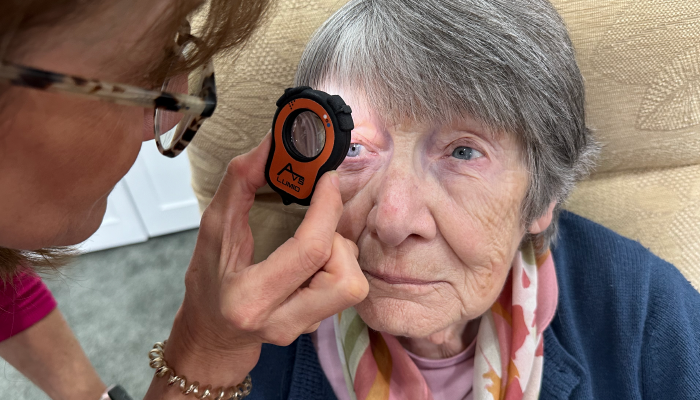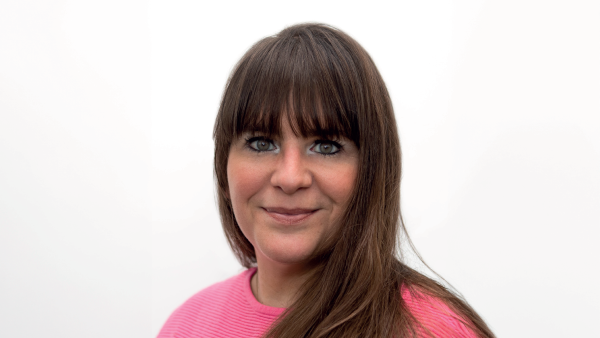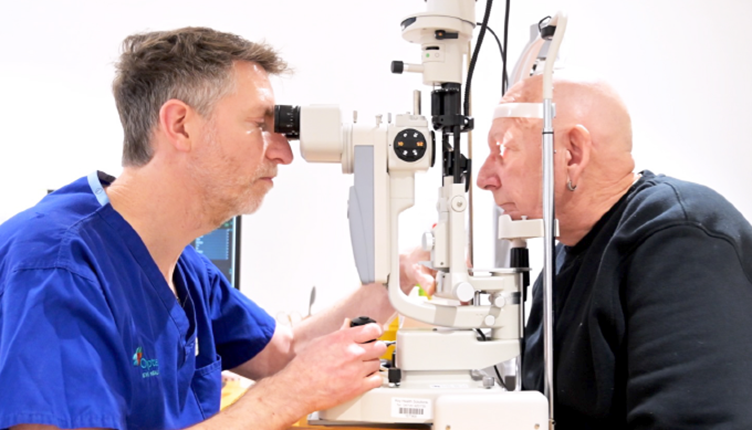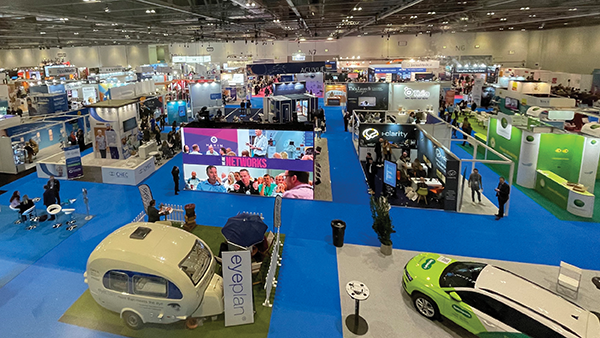A Portable Vision
Aston Vision Sciences’ founder, Karl Obszanski, outlines the potential of the Lumio device to expand access to eye care around the world
Aston Vision Sciences’s Lumio is a compact anterior eye inspection tool that the company says is applicable in a broad range of clinical environments, including hospitals, clinics, ambulances, domiciliary visits, and military field operations. Its low-cost versatility “means it can also be used to detect conditions like trichiasis, dy eye and cataracts early in some of the world’s most at-risk communities,” says Aston Vision Sciences founder, Karl Obszanski. “Given the scale of avoidable blindness, [it] could be a game-changer for global healthcare.”
We sat down with Obszanski to find out more about the device.
Could you describe the Lumio and how it compares with other eye inspection devices?
The Lumio is compact and portable, with a 7x magnification lens and a white and blue light. The idea for it came from a partner who works in the domiciliary space. He sees a lot of older patients who have posture problems [and] who don’t really take instructions very well because they can’t hear or comprehend, and he was looking for a device that he could use comfortably with these patients.
Importantly, the Lumio comes with a clip-in fluorescein filter, which allows you to perform a fluorescein examination in a variety of settings without the need for a slit lamp. This is convenient for patients with various kinds of anterior eye diseases, especially dry eye. Our “trade secret” is that we’ve developed the color formula for the fluorescein filter to give a very good performance. Even in the low blue-light conditions, you can see what’s going on in the eye very clearly. You can look at tear film break-up, contact lens fitting, scratches on the cornea, foreign bodies, etc. You can also adjust the brightness of the light source. Clinicians tend to go for the brightest light possible because it gives them more visibility. But if this is uncomfortable for the patient, with this device you can reduce the brightness and still get the visibility you need.
What are the implications of this tech for low-economy countries, and how do you plan to reach patients in these areas?
These low-cost devices can be used in countries that can’t afford the healthcare we can afford. They could help organizations to reach many more patients. I’ve been speaking recently to charities such as Sightsavers, the International Agency for the Prevention of Blindness (IAPB), and the Aravind Hospital Group in India. We have just sent two Lumio units to Avarind for testing, a couple to IAPB in Zimbabwe, and one to Nepal.
At the moment, we have a capacity to produce 1200 units a month. We’d be interested in working with one of these partners to maybe bring the cost down further and produce even higher-volume numbers. We’re proud to say the devices are made in the UK, but there is a cost to this. There are also cost barriers in terms of shipping them to some of these countries. But we want to offer a solution at the right price point, so in the future we could look at manufacturing the devices closer to the final use location.
What kind of real-world feedback have you been getting about the device?
A lot of the feedback so far is from clinicians here in the UK, where the device has been available since November 2024. They love the fact that they are able to use fluorescein very simply. I’m not just talking about traditional fluorescein with a blue light. When you add our yellow barrier filter, the amount of detail you can see makes it easier to make a confident diagnosis.
Can you tell me about your own background and how Aston Vision Sciences came about?
We’re a spin-out from Aston University in Birmingham. I was doing a PhD at Aston and looking at the different existing devices for diagnosing eye conditions. They tend to be non-portable and desktop-based, like regular slit lamps. So I thought, is there a way of making these devices smaller? At the moment eye care professionals mainly rely on the patient coming to the clinic. But as patients get older, they lose their mobility. At the same time, they also have a higher incidence of eye conditions.
I resolved, rather than just write this research in a book, that I should try and bring these ideas to market. At Aston University I had access to 3D printers, so I was able to make some prototypes and show them to a few practitioners in various settings. They showed enthusiasm, so I applied for a couple of grants. I was able to secure an Innovate UK grant and I completed a Royal Academy of Engineering Fellowship, which also came with some funding. That provided the early fuel to build a team to develop our products, and to really understand what it means to bring a medical device to market.
Can you tell us about your collaboration with the STEAMhouse innovation hub?
Like us, STEAMhouse is a Birmingham-based organization, part of Birmingham City University. They have really helped us to move forward. We’ve been able to use their facilities, such as laser cutters, 3D printers, laminating machines, etc., and this has been very useful in enabling us to accelerate our development. It’s an ongoing partnership for us, but they also work with other companies in all kinds of fields.
Anything else you’d like to add?
Interestingly, the Lumio also has a lot of applicability in the veterinary world. Animals have eye conditions, of course, but it’s not easy to do examinations on them, especially a big animal like a horse. The device makes it more convenient to work with animals of any size and this helps make sure that our animal friends are also receiving the care they need.
astonvisionsciences.com/lumio
The New Optometrist Newsletter
Permission Statement
By opting-in, you agree to receive email communications from The New Optometrist. You will stay up-to-date with optometry content, news, events and sponsors information.
You can view our privacy policy here
Most Popular
Sign up to The New Optometrist Updates
Permission Statement
By opting-in, you agree to receive email communications from The New Optometrist. You will stay up-to-date with optometry content, news, events and sponsors information.
You can view our privacy policy here
Sign up to The New Optometrist Updates
Permission Statement
By opting-in, you agree to receive email communications from The New Optometrist. You will stay up-to-date with optometry content, news, events and sponsors information.
You can view our privacy policy here








